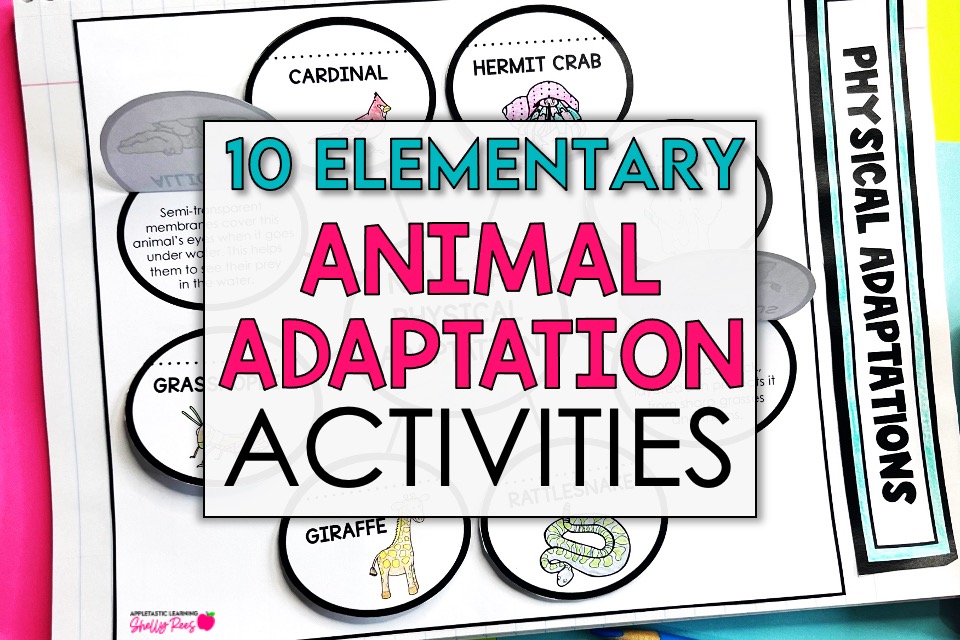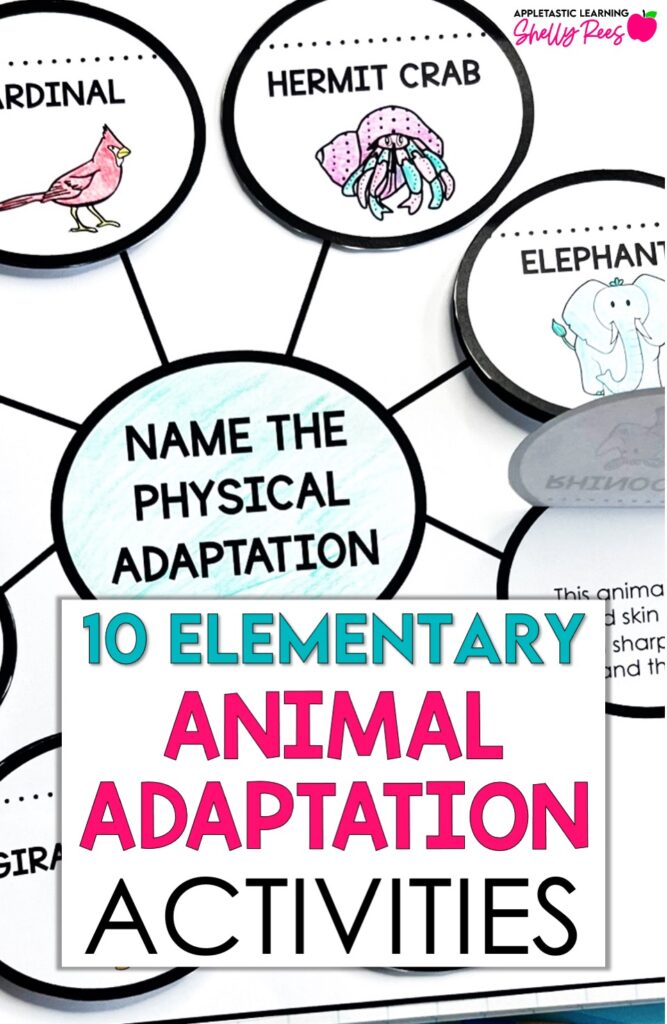


By incorporating a few different animal adaptation activities, your students will gain a better understanding of this phenomenon. Several of these activities can be found in my phenomenon based Animal Adaptations unit. Explore all of the amazing resources and utilize them to engage your students in the fascinating and vast topic of animal adaptations!
1. Camouflage Art: Have your students create artwork that demonstrates how animals use camouflage to hide from predators in their environment. Ask them to think about what colors and patterns might work best for blending in.
2. Interactive Notebook: Have students use scissors and glue to create liftable flaps where they can draw an animal on top and list its adaptation below! The phenomenon based Animal Adaptations Unit has a variety of ready-to-go interactive notebook pages for students to color, cut out, and glue into their notebooks! This is just one of many great animal adaptation activities included!
3. Adaptive Traits Scavenger Hunt: Take your students outside for a scavenger hunt! Provide lists of animals they should look for, along with their specific adaptive traits. Have them use binoculars or other tools to help them find and identify the creatures they encounter.
4. Predator-Prey Game: Play a simple game of predator versus prey with your students. Have them take on the role of hunters, looking for food and avoiding being eaten themselves. This will help them better understand how different animals must adapt to survive in their environment.
5. Animal Adaptations Vocabulary Wall: Hang up posters with vocabulary words and definitions related to animal adaptations for students to refer to throughout the unit. This is a great way to expose your class to key vocabulary everyday! Grab some already made vocabulary posters/cards in color or black and white in the Animal Adaptations unit!
6. Animal Habitat Art. Discuss how different species live in particular environments and have students create art projects that illustrate the various habitats. Ask them to think about how specific adaptations help animals survive in their particular environment, such as webbed feet for swimming or thick fur for warmth. This is one animal adaptation activities that is excellent for integrating art and science!
7. Adaptations Quiz/Activity: Use activities where students can read snippets of information and facts to answer questions and test their knowledge through both open ended and multiple choice questions. In the ready-made, phenomenon based Animal Adaptations Unit, I have an information page as well as a ready to go activity for students to test their understanding of what they just read!
8. Adaptations Reading Passages: Use grade level reading passages for students to research and learn about animal adaptations independently. Find an adaptations reading passage with facts and a question sheet, along with even more animal adaptation activities in the Animal Adaptations Unit!
9. Adaptive Design. Another one of many great animal adaptation activities! Have students design their own animals with special adaptations that will help them survive in a certain environment, such as the Arctic or the jungle. Ask them to explain why they chose particular traits for their creature and how those adaptations will help it survive. This could be done through art, presentations, or even a short paper!
10. Adaptations Vocabulary Tour: Provide students with a list of vocabulary words they should know related to animal adaptations. Make this activity interactive and mobile by hanging up posters with the definitions around the classroom and have students do a “tour” to fill in all of the definitions on their sheet using the scattered posters. Find a vocabulary sheet for students to fill in definitions as well as vocabulary posters or notecards here!
Animal adaptation activities are a great way to teach elementary students about this phenomenon. By incorporating creative and interactive activities into your science lessons, students have the opportunity to learn in a fun and engaging way. These phenomenon based science activities help students understand how different animals must adapt in order to survive in their environment, while also teaching them key vocabulary words related to animal adaptations. With the help of these activities, your students will be able to better grasp the concept of animal adaptations!


Hi, I’m Shelly! Thank you for being here. I love helping third, fourth, and fifth grade teachers with fun and engaging activities that require no to little prep! Let me help you by taking some of the stress and work off your plate.

©2022 Shelly Rees. All Rights Reserved.